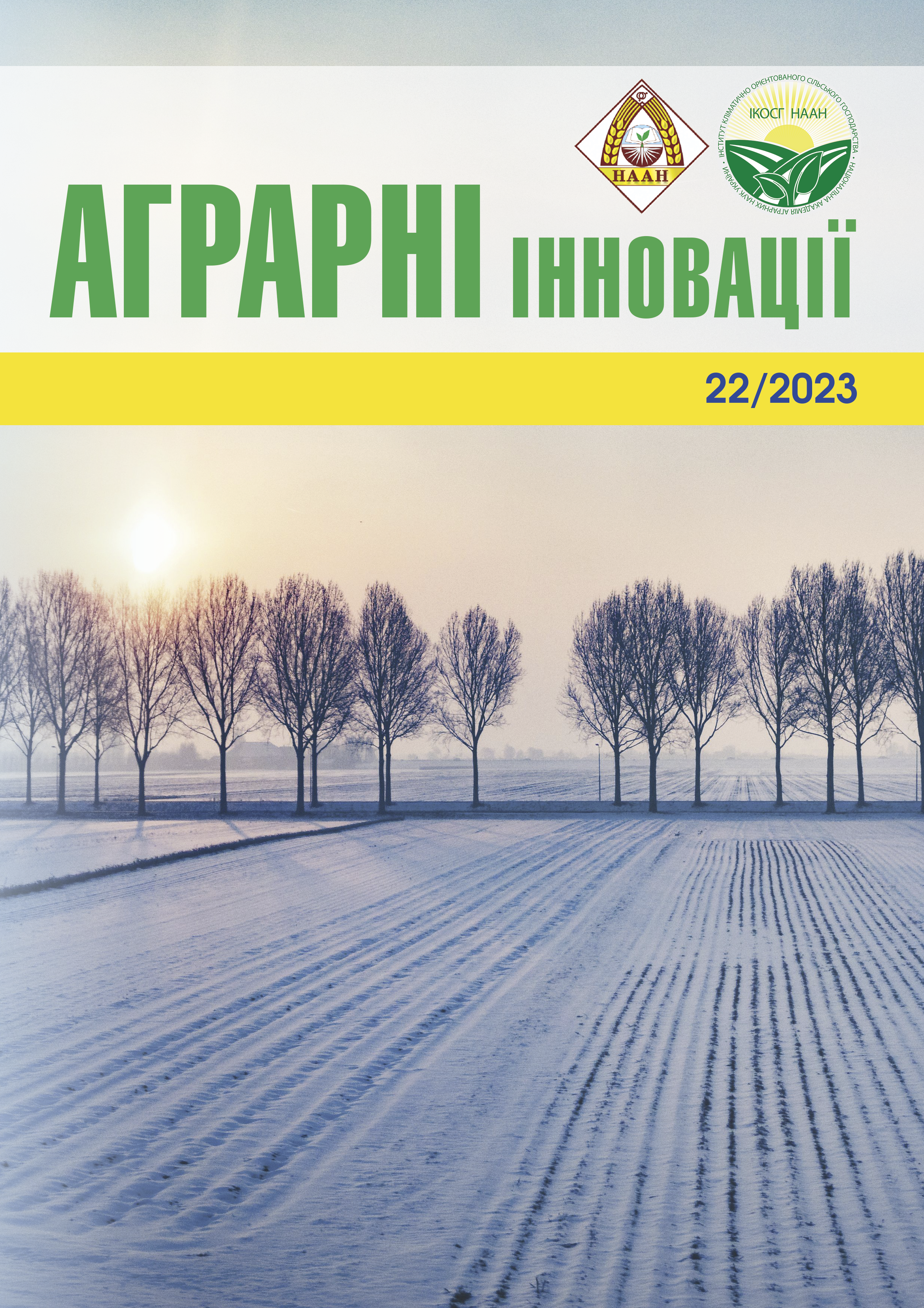THE EFFECT OF LONG-TERM APPLICATION OF MINERAL FERTILIZERS ON THE RELATIVE REMOVAL, UTILIZATION RATE AND BALANCE INTENSITY OF THE MAIN NUTRIENTS OF HULLESS SPRING BARLEY
Abstract
Aims. To determine the relative removal, utilization rate and intensity of the balance of the main nutrients of hulless barley during long-term use of mineral fertilizers. Methods. Field, laboratory, calculation-comparative, analysis, statistical. Results. It was found that the share of nitrogen in the economic removal of grain is the highest – 63.2–65.5 %. The share of potassium is the lowest – 13.9–15.4 %, and phosphorus – 20.6–21.7 % depending on the experiment variant. It should be noted that fertilizer application increases the share of nitrogen in the economic removal of the main nutrients. Moreover, the share of phosphorus and potassium almost does not change. Potassium share was the highest in the household straw removal – 59.0–62.8 %. Phosphorus share was the lowest – 14.6–16.0 %, and the share of nitrogen – only 21.2–24.4 % depending on the experiment variant. The relative removal of nitrogen increases from 18.7 to 22.0–24.0 kg/t of grain and the corresponding amount of straw, or by 18–28 % in nitrogen containing variants. The use of phosphorus-potassium system ensures this indicator at the level of 19.4 kg/t or by 4 %. The use of mineral fertilizers increases the relative removal of phosphorus from 7.7 to 8.5–10.1 kg/t or by 10–31 %, and potassium – from 13.7 to 15.0–18.9 kg/t of grain and the corresponding the amount of hulless spring barley straw, or by 9–38 %. Conclusions. It was established that the long-term application of mineral fertilizers affects the relative removal, uptake coefficient and balance intensity of the main nutrients during the cultivation of hulless spring barley. Calculations show that the highest nitrogen uptake coefficient is 76.3 % when applying N35, and increasing the dose of nitrogen fertilizers to 70 kg/ha per year reduces it to 51.9 %. The use of phosphorus and potassium fertilizers helps to increase this indicator to 55.7–67.1 %, except for N70P30K35 variant. The lowest uptake coefficient of phosphorus from fertilizers was obtained with the phosphorus- potassium and nitrogen-phosphorus fertilization systems – 10.8–11.2 %. The highest uptake of phosphorus from fertilizers was obtained in the areas where 30 kg/ha of phosphorus fertilizers were applied – 35.7–37.0 %. The highest uptake rate of potassium from fertilizers when applying N70 as part of a complete mineral fertilizer at doses of potassium fertilizers of 35 kg/ha per year is 65.7–70.3 %. Hulless barley absorbs the least amount of potassium on the phosphorus-potassium fertilization system – 18.9 %. Ecologically safe indicators of intensity for phosphorus and potassium are ensured by systems using incomplete return of phosphorus and potassium fertilizers on the background of 35–70 kg/ha of nitrogen fertilizers.
References
2. Melle T., Asfaw A., Getachew T. Participatory evaluation and promotion of improved food barley varieties in the highlands of north western Ethiopia. Journal of Agricultural Research. 2015. Vol. 4(3). Р. 50–53.
3. Woubshet D., Selamyihun K., Cherukuri R. Effect of integrated use of lime, blended fertilizer and compost on productivity, nutrient removal and economics of barley (Hordeum vulgare L.) on acid soils of high lands in West Showa Zone of Ethiopia. International Journal of Life Sciences. 2017. Vol. 5 (3). Article number 311322.
4. Гамаюнова В. В., Касаткіна Т. О. Формування врожаю зерна ячменю ярого та його структури залежно від сорту і умов живлення в Південному Степу України. Вісник Харківського НАУ. 2019. № 2. С. 87–98.
5. Господаренко Г.М., Любич В.В. Динаміка вмісту азоту в рослинах сортів тритикале ярого залежно від норм і строків застосування азотних добрив. Наукові доповіді НУБіП. 2010. № 2. URL: http://www.nbuv.gov.ua/e-journals/Nd/2010–2/10hhmnfa.pdf.
6. Любич В. В. Технологічні параметри виробництва зерна тритикале ярого, вирощеного за різних доз азотних добрив. Вісник Уманського НУС. 2023. № 2. С. 74–82.
7. Господаренко Г. М., Стасінєвич О. Ю. Продуктивність польової сівозміни залежно від параметрів показників родючості чорнозему опідзоленого. Вісник Харківського Національного аграрного університету ім. В. В. Докучаєва. 2004. № 1. С. 158–163.
8. Господаренко Г. М., Стасінєвич О. Ю., Прокопенко Е. В. Врожайність зерна ячменю ярого за тривалого застосування добрив у польовій сівозміні. Вісник Уманського НУС. 2015. № 1. С. 3–6.
9. Любич В.В., Невлад В.І., Мартинюк А.Т. Продуктивність тритикале ярого за різних доз азотних добрив. Агробіологія. 2022. № 1. С. 152–159.
10. Любич В. В. Баланс основних елементів живлення в ґрунті за різних доз і строків внесення добрив під тритикале яре. Агрохімія і ґрунтознавство. 2011. Вип. 74. С. 107–109.
11. Господаренко Г. М., Черно О. Д., Любич В. В., Бойко В. П. Засвоєння основних елементів живлення з ґрунту й мінеральних добрив пшеницею озимою на чорноземі опідзоленому Правобережного Лісостепу. Вісник аграрної науки Причорномор’я. 2020. Вип. 3 (107). С. 35–44.






